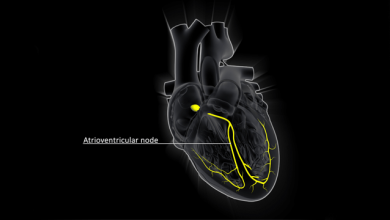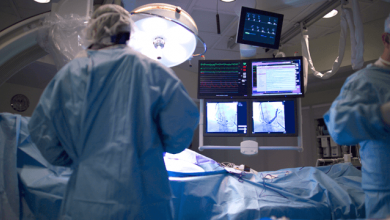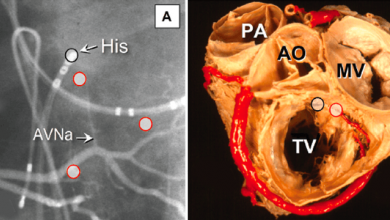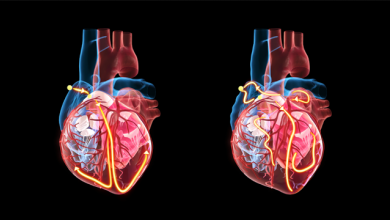Search results
Author(s):
Robert H Anderson
,
Jill PJM Hikspoors
,
Justin T Tretter
,
et al
Added:
2 years ago
Author(s):
Demosthenes G Katritsis
Added:
3 years ago
Since its first description by Hays in England in 1906, second-degree atrioventricular (AV) block has been a fascinating clinical entity, mainly due to obscure points regarding its diagnosis that emanate from misconceptions and errors regarding its proper definition.1–3 The practicing clinician should be aware of the following points that may assist a proper diagnosis and, consequently, accurate…
View more
Author(s):
Sharon A George
,
N Rokhaya Faye
,
Alejandro Murillo-Berlioz
,
et al
Added:
3 years ago
More than 100years have passed since the atrioventricular node (AVN) was first discovered by Sunao Tawara1 and described as a “Knoten” of tissue located at the proximal end of the Bundle of His (BoH).2 Despite the numerous advances in knowledge regarding the structure and function of the AVN, there are still several controversies that need to be addressed in both clinical and scientific settings…
View more
Author(s):
José-Ángel Cabrera
,
Robert H Anderson
,
Andreu Porta-Sánchez
,
et al
Added:
2 years ago
Author(s):
Demosthenes G Katritsis
,
Mark E Josephson
Added:
3 years ago
Atrioventricular nodal reentrant tachycardia (AVNRT) denotes re-entry in the area of the AV node, and represents the most common regular arrhythmia in the human.1 Although several models have been proposed to explain the mechanism of the arrhythmia in the context of the complex anatomy and the anisotropic properties of the atrioventricular (AV) node and its atrial extensions (see Figure 1),2 the…
View more
Author(s):
Demosthenes G Katritsis
Added:
3 years ago
Although the exact circuit of atrioventricular nodal re-entrant tachycardia (AVNRT) still eludes us, AVNRT is the most common regular arrhythmia in humans, and therefore the most commonly encountered during ablation attempts for regular tachycardias.1–4 Catheter ablation for AVNRT is the current treatment of choice in symptomatic patients. It reduces arrhythmia-related hospitalisations and costs,…
View more
Human Atrioventricular Node
Author(s):
Demosthenes G Katritsis
Added:
3 years ago
Article
Mahaim Revisited
Author(s):
Eduardo Back Sternick
,
Damián Sánchez-Quintana
,
Hein J Wellens
,
et al
Added:
1 year ago
Article
Author(s):
Maria Kokladi
Added:
3 years ago
Dear Sir,
I read with great interest the elegant review written by Dr Efimov and colleagues on the structure and properties of the atrioventricular (AV) node in the last issue of this journal (AER 6(4):179–85).1 However, there are several points that need further clarification.
The authors state that total protein and mRNA levels of Cx40, Cx43 and/or Cx45 can be assessed qualitatively and…
View more
















